SSD
Latest
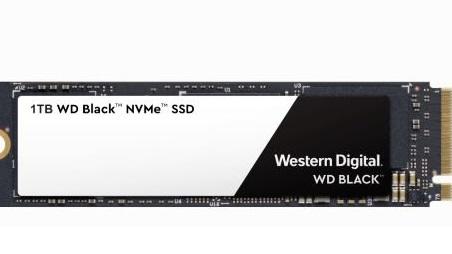
Western Digital unveils its new 4K-ready NVME gaming SSD
While it tries to craft a microwave-assisted 40TB hard drive by 2025, Western Digital is releasing storage solutions for the nearer future. The company introduced the Black 3D NVMe, an SSD designed to run 4K and Ultra HD graphics quickly and seamlessly, which should suit gamers and high-end video producers.

Gnarbox's mobile video editing drive now comes in an SSD version
Gnarbox broke new ground in portable storage with its first drive, which let pros start editing photos and videos before they've reached a PC. But what if you still want something more powerful? Don't worry, you're covered: the company is crowdfunding Gnarbox 2.0, an updated version with an NVMe-based solid-state drive (instead of the previous model's basic flash storage) as its centerpiece. Hook up a camera through USB-C and you can back up your photos and videos at a rapid 450MB/s, which might set your mind at ease if you have a ton of footage to save. You'll also find a faster processor (an unnamed 2.4GHz quad-core Intel chip) and an OLED that lets you perform some backups without even needing your phone.
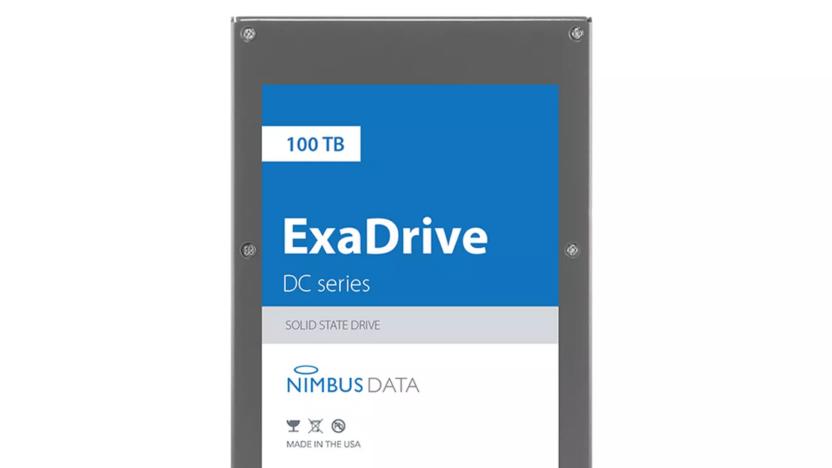
World's largest SSD capacity now stands at 100TB
That didn't take long -- just a month after Samsung released a record-setting 30TB SSD, a rival has claimed the throne. Nimbus Data has unveiled the ExaDrive DC100, which crams 100TB of 3D flash memory into a standard 3.5-inch SATA form factor. For context, that's 20 million songs (if you assume 5MB each) in a device small enough to fit into your home PC. Not that you're about to buy one, unfortunately.

Samsung has the world's largest SSD, again, at 30TB
Nearly two years ago Samsung released a 15.36TB drive that it said had the most capacity of any SSD. Now, it has topped that with a new effort that it claims features twice the capacity and performance. Inside its 2.5-inch frame, the PM1643 has 30.72 TB ready for whatever enterprise storage needs you have, with sequential read/write speeds of 2,100MB/s and 1,700 MB/s.
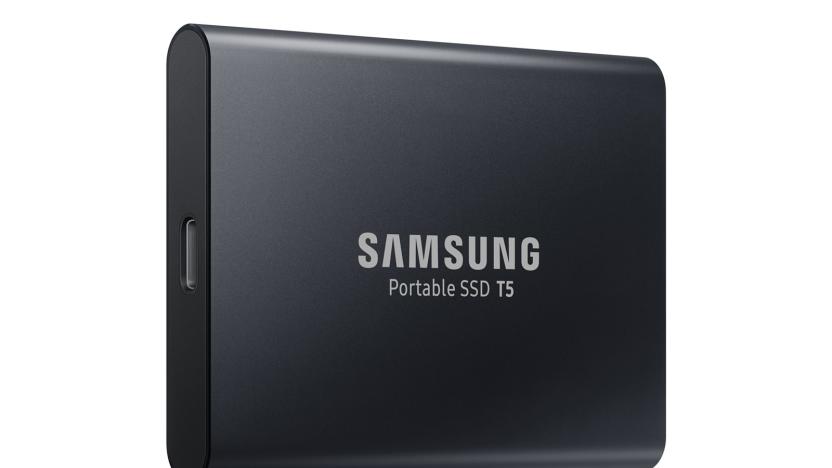
Samsung's latest portable SSD can handle RAW 4K video
We keep hearing about obtuse terms like "96-layer" and "V-NAND" for flash storage tech, but what does that mean for actual products? Samsung has given us a concrete answer with its latest portable SSD drive, the T5. It uses bleeding-edge 64-layer V-NAND and USB 3.1 gen 2 tech to generate impressive 540 MB/s transfer speeds, assuming your host computer can handle it. That's about as fast an external device of any kind that you can find right now.

Samsung's high-capacity V-NAND memory is perfect for massive SSDs
Just over four years since it unveiled the first 3D vertical NAND memory, Samsung has developed its first 1 terabit (Tb) V-NAND chip. The flash memory technology, used in devices ranging from smartphones to digital cameras, will launch next year. As its name suggests, V-NAND boasts a vertically stacked structure with greater density than memory cells placed on a single, 2D plane. The result is more speed, up to ten times more reliability, and less chance of a breakdown. As with its 256 gigabit consumer SSDs, Samsung's new chips will probably find their way into your next laptop, and maybe even future phones. That's not all, Samsung also announced that the 1Tb chip will enable a single V-NAND package with 2 terabytes of memory capacity. As you might have guessed, that could mean more bang for your buck when it comes to SSDs for home PCs.
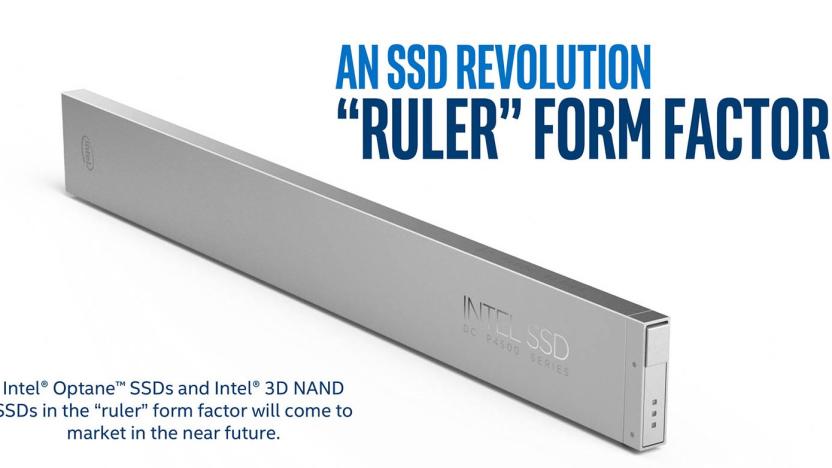
Intel's push for petabyte SSDs requires a new kind of drive
There aren't many ways to make data center storage exciting, but mentioning a drive that could hold up to one petabyte (1,000 terabytes) comes close. Intel is making the case to swap out old disk-based drives in data centers with SSDs, and as part of that it's showing off a new "Ruler" form factor. Instead of molding to the 2.5-inch and 3.5-inch size of traditional drives or just the dimensions of a PCIe slot, its long skinny shape fits into a standard rack mounted server. As TechGage notes, with regular 10TB hard drives, slapping together a petabyte's worth would fill up a 100-bay 4U server. The new Ruler drives aren't available yet, but Intel claims it will offer them with both its Optane and 3D NAND SSDs in the "near future."
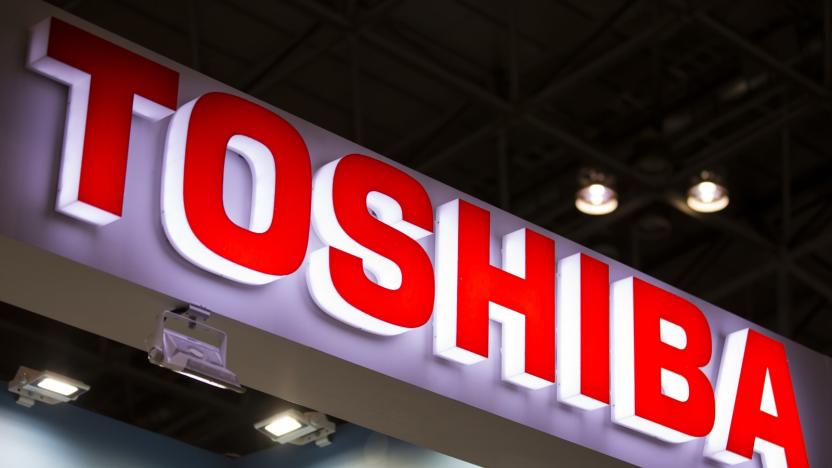
Toshiba's latest SSD tech squeezes 128GB onto a tinier chip
Toshiba and (we think) its partner WD have just unveiled the next generation of rapidly evolving flash memory technology. Its 96-layer NAND tech will arrive in 2018 in 3-bit, 32GB (256 gigabit) chip sizes. That will allow for SSDs and other flash products with 40 percent more storage than 64-layer NAND (which WD and Toshiba started manufacturing last month), reducing consumer prices. Furthermore, WD says that the tech is capable of 64GB all the way up to one terabit (125GB) per chip using 4-bit-per-cell technology.

Intel's SSD 545s has size and speed at an affordable price
It's not too hard to find inexpensive solid-state drives that offer either a lot of storage or brisk performance, but finding both? That's hard. Intel, however, thinks it has a chance. It's launching a budget 2.5-inch drive, the SSD 545s, that theoretically offers both high capacity and speed without straining your wallet. The key is the nature of the storage itself. This is the first shipping drive to use extra-dense 64-layer 3D flash storage, which lets Intel offer an abundance of space using relatively few chips (and thus a lower price) while maintaining performance. The 512GB debut model, for example, costs $180 brand new -- it's not the cheapest out of the gate, but street prices could make it very tempting.
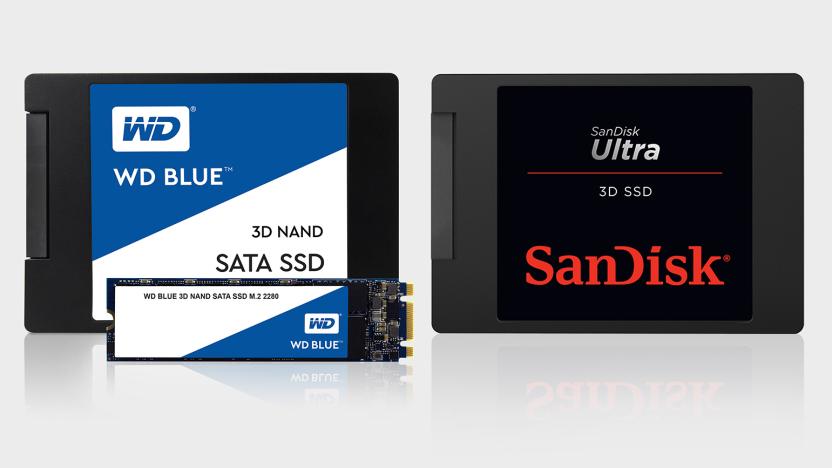
WD's next-gen SSDs add even more speed and capacity
Hard disk specialist Western Digital (WD) acquired SSD maker SanDisk last year for a colossal $19 billion, and now we're getting some idea as to its strategy. The company unveiled two new lineups -- branded under each company's names -- that feature the first SSDs to use 64-layer 3D NAND chips developed by SanDisk. The new, higher capacity chips will allow for "lower power consumption and higher performance, endurance and capacities," Western Digital wrote in its press release.
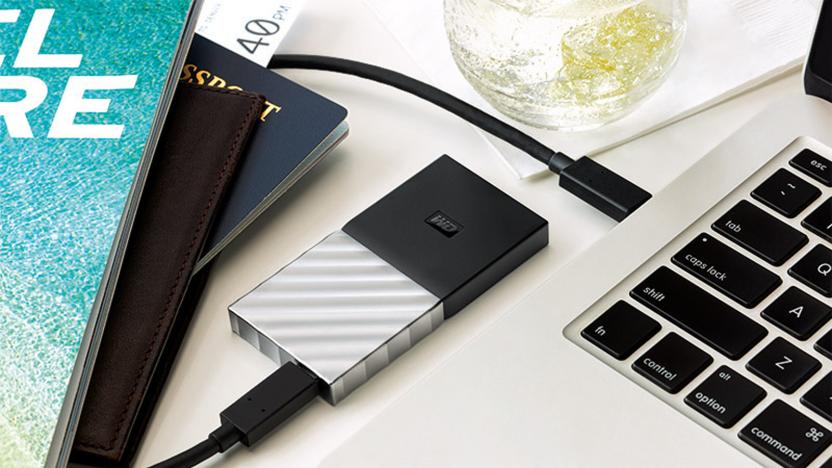
Western Digital unveils its first portable SSD
Western Digital only just started accepting that SSDs are ready for the mainstream, but it's making up for that lost time by launching its first portable SSD just months after unveiling a desktop drive. The simply-named My Passport SSD gives you 256GB, 512GB or 1TB of flash storage in a pocketable and ever-so-slightly fashionable design. While it's not the absolute fastest drive we've seen with a peak 515MB/s sequential read speed (it's a bit faster than Samsung's T3), the new drive is definitely keeping up with the Joneses. It's designed for USB-C (there's a USB-A adapter in the box), touts 256-bit hardware encryption and is tough enough to survive a 6.5ft drop.
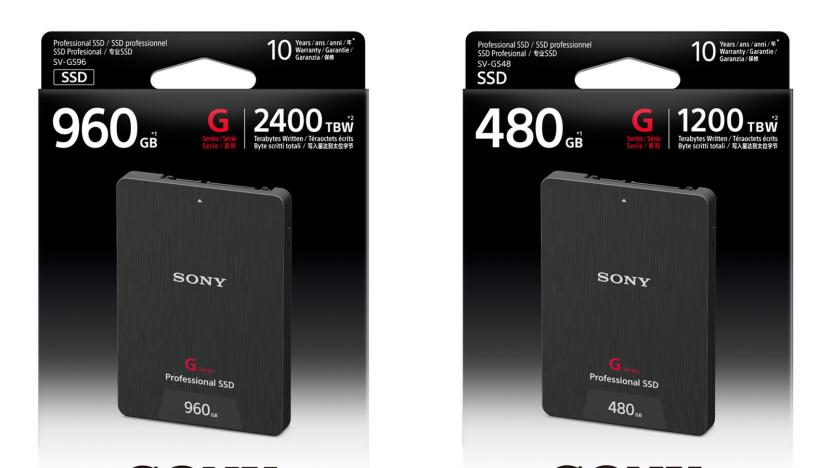
Sony's SSDs can withstand the torture of capturing 4K
Aspiring 4K filmmakers who want the best quality can buy pro-level RAW video cameras on the cheap, or use a DSLR with an external 4K recorder like the Atomos Ninja 2. However, the SSDs on such devices often record and dump out high bit-rate 4K video multiple times a week, so they need to be much faster and more durable than the one on your laptop. That's where Sony comes in with its latest G Series Professional SSDs, which can write up to 2,400 terabytes without failing and use tech that prevents disastrous frame dropping.
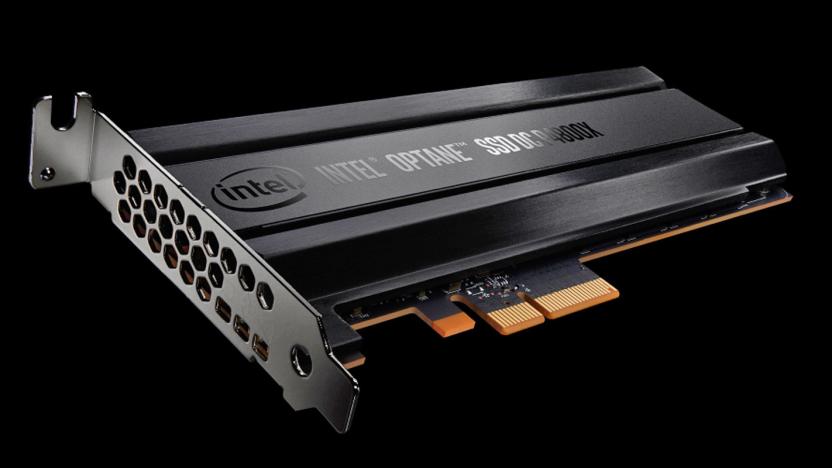
Intel's first hyper-fast 3D drive is meant for servers
At last, Intel is making a stand-alone drive based on its extremely fast 3D storage technology... although you're probably not about to pick one up yourself. The chip maker has unveiled the Optane SSD DC P4800X, a drive destined for the PCI Express or NVMe slots in servers. It only has 375GB of space, but its extremely low latency (typically under 10µs) and 2GB/s throughput means that it can serve as either a memory cache or storage. If you're involved in high-performance computing, online shopping or other categories obsessed with gobs of RAM and rapid turnaround times, this is theoretically your dream device.

Western Digital finally offers a consumer SSD
Western Digital has enjoyed a long run supplying data drives for all markets, but had stubbornly resisted releasing solid-state ones for consumers. This was an odd position back in 2008 when the technology began entering the mainstream and it's only become a more glaring omission in the interim. But today, WD is finally offering its first SATA SSDs for personal computers.

Samsung's 4TB SSD is built to replace your hard drive
It's not hard to get a capacious solid-state drive if you're running a server farm, but everyday users still have to be picky more often than not: either you get a roomy-but-slow spinning hard drive or give up that capacity in the name of a speedy SSD. Samsung may have finally delivered a no-compromise option, however. It's introducing a 4TB version of the 850 Evo that, in many cases, could easily replace a reasonably large hard drive. While it's not the absolute fastest option (the SATA drive is capped at 540MB/s sequential reads and 520MB/s writes), it beats having to resort to a secondary hard drive just to make space for your Steam game library.

Samsung's new 512GB SSD is smaller than a postage stamp
Storage in your laptop or smartphone is a compromise between volume, access speed and physical size. But, the industry's competition to shrink them while boosting their specifications is fierce. A few months after shipping a 16TB solid-state drive, Samsung has announced a fast, efficient 512GB SSD that's half the size of a postage stamp.

Seagate will launch the 'fastest-ever' SSD this summer
Geeks of all stripes agree: there's no such thing as being able to move data too fast. Luckily for them, Seagate will soon show off a "production-ready" solid-state drive that push those bits like no one's business. That SSD -- which is expected to officially launch this summer -- can move data at up to 10GB per second, making the Samsung drive that last held the record seem pokey by comparison.

Samsung starts shipping the world's largest capacity SSD
Samsung has started shipping the 16TB (well, okay, 15.36TB) SSD it showed off at the Flash Memory Summit in California last year. The company says the positively tiny, 2.5-inch drive has the largest capacity among all the SSDs in the world. It still didn't mention how much one would cost you -- not that you'd need one if you're an ordinary user -- most likely because it's marketing the SSD as an enterprise product for obvious reasons. It boasts in its announcement post that since the product's a 2.5-inch SSD, businesses can fit more drives in their server racks than if they use 3.5-inch drives.

Samsung's new portable SSD puts 2TB in your pocket
Samsung ushered in last year by launching its first portable SSD, so it's only fitting the company should kick 2016 off by announcing a bigger, better successor. The new Portable SSD T3 is similar to the older T1 in more ways than one. It uses Samsung's reliable vertical NAND (V-NAND) memory, is capable of read/write speeds of up to 450 MB/s and though it's ever-so-slightly larger and heavier than the T1, the T3 is still tiny enough to get lost in a deep pocket. Arguably the most significant development is the jump in capacity, as the T3 will be available with either 250GB, 500GB, 1TB or a massive 2TB of storage.

Flash-based drives may soon be as cheap as the spinning kind
If you've noticed that solid-state drives (and the PCs that include them) no longer cost an arm and a leg, you're not alone. Researchers at DRAMeXchange understand that the price per gigabyte of an SSD has fallen off a cliff in the past three years, and the trend is only accelerating. If the company's estimates are on the mark, these drives could cost just 11 cents more per gig than conventional hard drives by 2017. At that rate, you might not have to choose between high capacity and breakneck speed when you're on a budget -- you could easily afford both.







